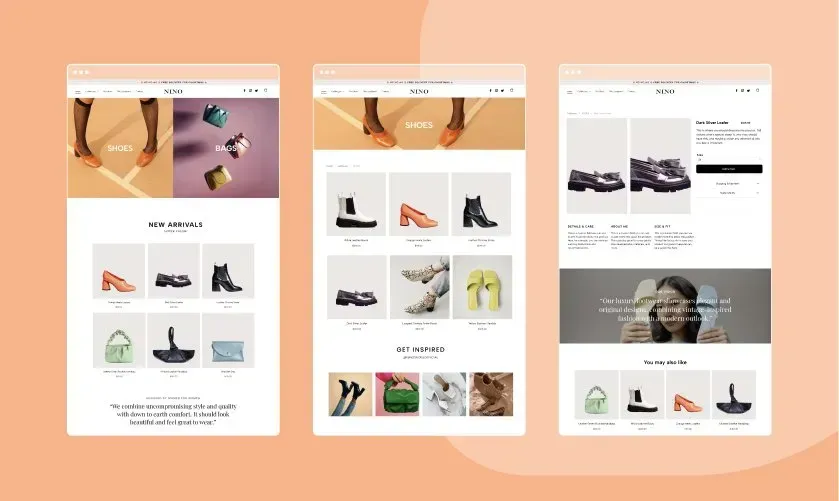A very common question asked in the tech world - what is eCommerce? Well the term eCommerce refers to the buying and selling of goods or services (physical and digital) using the internet, and the transfer of money and data to execute these transactions. The term can also describe any kind of commercial transaction that is facilitated through the internet.
Did you know the first purchase made online was someone buying a CD by the band Sting from his friend through a website called NetMarket, an American retail platform, back in 1994? The very first example of a consumer purchasing a product from a business through the internet—or “eCommerce” as we commonly know it today. Ever since then, eCommerce has evolved to make products easier to discover and purchase through online portals. Businesses of all sizes have benefited from eCommerce, which enables them to sell their goods and services at a scale that was not possible with traditional offline retail. In fact, global retail eCommerce sales are estimated to hit a total $4.89 trillion in 2021. That figure is estimated to skyrocket over the next few years, showing that eCommerce is becoming a profitable option for all online retailers.
In 2019, only 13.6% of sales were made from online purchases. However, that number is expected to reach 19.5% in 2021. And that growth is expected to continue as it has been suggested that eCommerce sales will reach 21.8% by 2024, which translates to over an 8% point increase in 5 years.
What are the Different eCommerce Business Models?
There are 4 main types of eCommerce models that can describe almost every transaction that takes place between consumers and businesses online. These are:
1. Business to Consumer (B2C): When a business sells goods and services to an individual consumer (i.e. when you buy a pair of trainers from an online store).
2.
Business to Business (B2B): When a business sells goods and services to another business (i.e. a business selling a software service for other businesses to use)
3.
Consumer to Consumer
(C2C): When a consumer sells goods and services to another consumer (i.e. selling your old sofa to someone on eBay).
4.
Consumer to Business (C2B): When a consumer sells their own products and/or services to a business or organisation (i.e. an influencer offering to advertise a skin care product their online audience in exchange for a fee).
Examples of eCommerce
At this point you're probably trying to think about the kinds of eCommerce you have seen before. Well, eCommerce can take on a variety of forms - they are:
- Retail
- Wholesale
- Subscription
- Dropshipping
- Physical products
- Digital products
- Services
- Crowdfunding
What are the Benefits of eCommerce?
There's a reason why eCommerce has seen an explosive growth in the past couple of years, and that's because the internet has become an essential requirement of everyday life. Think about it, how many things have you Googled so far today? How many times have you visited your social media accounts? How many webpages have you visited in the last hour? And as the internet is an essential part of everyone's lives, businesses are learning to take advantage of the numerous benefits of eCommerce. The most notable benefits include:
- A global market - a physical store will always be limited by it's geographical area and how far it can serve, but an online store (or any other type of eCommerce business for that matter) has the whole world as its market. Going from a local customer base to a global market at no additional cost is really one of the greatest advantages of a business trading online.
- 24/7 availability - running your business online = always open. For you as a business owner selling goods and services online, you'll see a dramatic increase in sales opportunities; and for a customer, it’s a convenient and immediately option. Without the restrictions of the working hours, eCommerce businesses can serve customers 24 hours,7 days a week, 365 days a year.
- Reduced costs- eCommerce businesses benefit from significantly lower running costs. Why? Well, there’s no additional expenses to hire sales staff or maintain a physical storefront. The main costs associated with eCommerce include warehousing and product storage. However, those running a dropshipping business enjoy even lower upfront investment requirements.
- Work from anywhere - running an eCommerce business means that you don’t need to sit in an office from 9 to 5. A laptop and an internet connection is all it takes to manage your business from anywhere in the world. Work on the go.
- Targeted marketing - with access to such a wealth of data, those that have their business' online are given an opportunity to keep an eye on customer buying habits as well as the industry trends. Every eCommerce business can stay agile and shape their marketing efforts to provide a better-tailored experience for new and returning customers.
- Inventory management - eCommerce businesses can automate their inventory management by using the right tools to accelerate ordering, delivery and payment procedures. These tools are saving businesses billions of dollars in operational and inventory costs.



